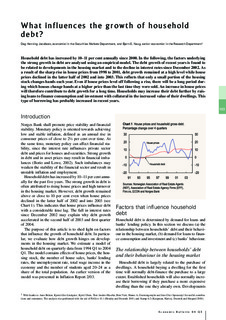| dc.description.abstract | Household debt has increased by 10–11 per cent annually since 2000. In the following, the factors underlying the strong growth in debt are analysed using an empirical model. The debt growth of recent years is found to be related to developments in the housing market and to the decline in interest rates since December 2002. As a result of the sharp rise in house prices from 1998 to 2001, debt growth remained at a high level while house prices declined in the latter half of 2002 and into 2003. This reflects that only a small portion of the housing stock changes hands each year. Even if house prices level off following a rise, there will be a long period during which houses change hands at a higher price than the last time they were sold. An increase in house prices will therefore contribute to debt growth for a long time. Households may increase their debt further by raising loans to finance consumption and investment with collateral in the increased value of their dwellings. This type of borrowing has probably increased in recent years. | nb_NO |
